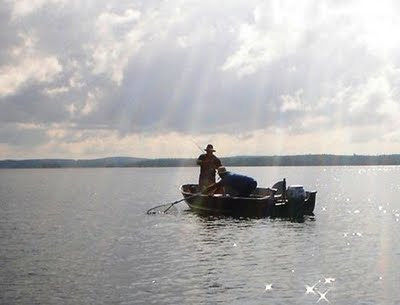
"Mare's tails and mackerel scales make tall ships carry low sails," old seafarers used to say.
In other words, a storm is coming, one with lots of wind, so take in your sails or you might capsize.
I get a kick out of reading in the media every time a meteorologist is asked if sayings like this really do predict the weather. They almost always chuckle and say there were a lot of quaint sayings and folksy ways that people in the olden times used to predict the weather, like examining the fat around pigs' guts. Of course, today we know this is all rubbish.
I beg to differ, at least on the validity of weather sayings. Frankly, I have no experience with pig guts but it does seem unlikely they would be a good way to tell the future.
Mare's tails and mackerel scales, on the other hand, are actual weather phenomena and they really do predict the weather, just not far in advance.
The photo shows mares tails, high cirrus clouds. I don't have a photo of mackerel scales but they are small clouds arranged in a fish scale pattern.
Both mean a storm within 12 hours.
Similarly, the saying "red sky at night, sailor's delight. Red sky in morning, sailors take warning," works nearly 100 per cent of the time. And again, you are only predicting 12 hours in advance.
It's my turn to chuckle when I hear the weather forecasters talk about their own accuracy.
Some say they are right 75 per cent of the time. Does that include today's forecast? I bet it does, and frankly, they're always right on the money with today. "It's raining today." Yes, it is.
What I notice about the weather forecast reliability is that it is very accurate for the next 12 hours, just like the weather sayings are. Then it goes rapidly downhill. The forecasts for more than two days away are no more than 50 per cent. You could flip a coin and do as well.
Those forecasts for up to 14 days are utter fiction. I think they are based on statistical averages for those dates, not weather systems. I mean, where would the weather system that we get today be 14 days earlier? China?
Thanks, but I'll stick with the weather sayings.
For the bemusement of meteorologists everywhere, here are a couple more that I like and trust.
"When the dew is on the grass, rain shall never come to pass." Dew means high barometric pressure which means dry weather, even if it happens to be cloudy.
"A sudden storm is soon over." A storm that seems to come out of nowhere is almost certainly a thunderstorm which is always very local.
Click to go back to our website:
http://www.bownarrows.com/Click to see the latest on the blog:
http://www.bownarrows.blogspot.com/


















